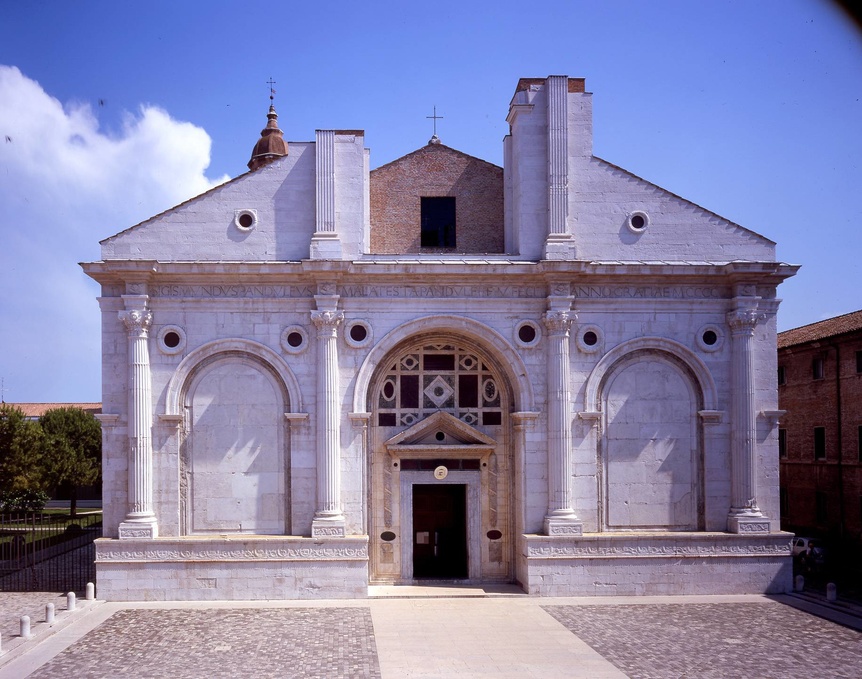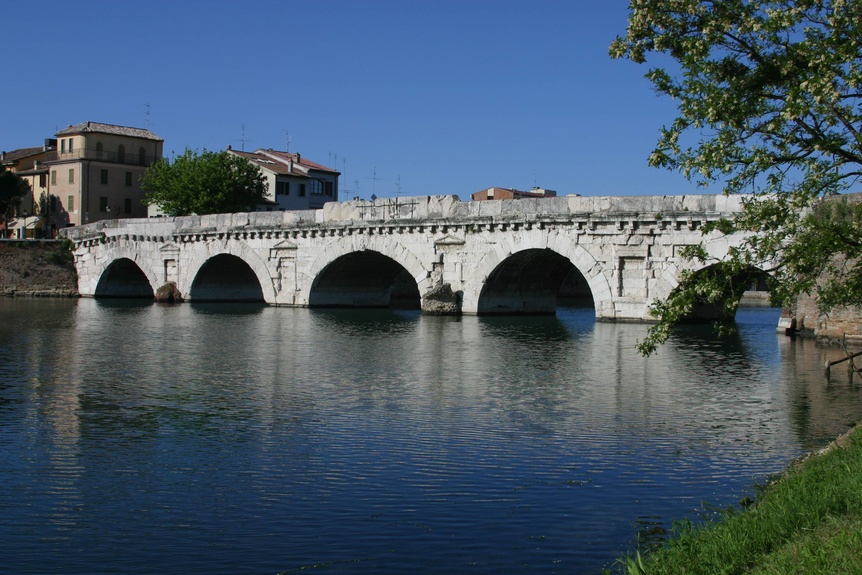
Rimini, the old and the new.
Founded by the Romans in 268 BC, it was under the rule of the Malatesta family, towards the end of the XIII century, that Rimini became a hub of culture and art. Within the city beat two vibrant hearts: the historic centre with its quaint little boroughs and the attractive marina that leads the way to no less than 15km of beach that have been attracting tourists from all over Europe since the early 1900's.
Malatesta Temple is the cathedral church of the city and no visit to Rimini would be complete without seeing this extraordinary example of Renaissance architecture, commissioned by Sigismondo Malatesta and designed by Leon Battista Alberti. Unfortunately the church was never completed, but it houses two Italian masterpieces: the first version of The Crucifix by Giotto located on the altar and in the second right chapel, the famous fresco by Piero della Francesca showing Sigismondo Malatesta in the presence of St. Sigismondo.


Construction of this impressive bridge over the river Marecchia began under the reign of Emperor Augustus and was completed by his successor Tiberius. Built entirely out of Istrian stone, it features five Doric style arches and is one of the finest examples of the few remaining Roman bridges. It marks the beginning of the via Emilia and stands at the end of the town's main street (corso d'Augusto).
Built in 27 AC in honour of Octavian Augustus Caesar, this is the oldest of the surviving Roman arches and stands where the two ancient roads of Rimini, via Flaminia and via Emilia, meet. A splendid construction in Istrian stone, the arch was recently restored to his former beauty.
This main piazza plays host to an array of striking buildings such as Palazzo dell'Arengo, Palazzo del Podestà (housing the town council offices), the Old Fish Market and the Galli Theatre. In the centre of this medieval multitude is the impressive "Pigna" fountain which has been completely restored to its original working order.